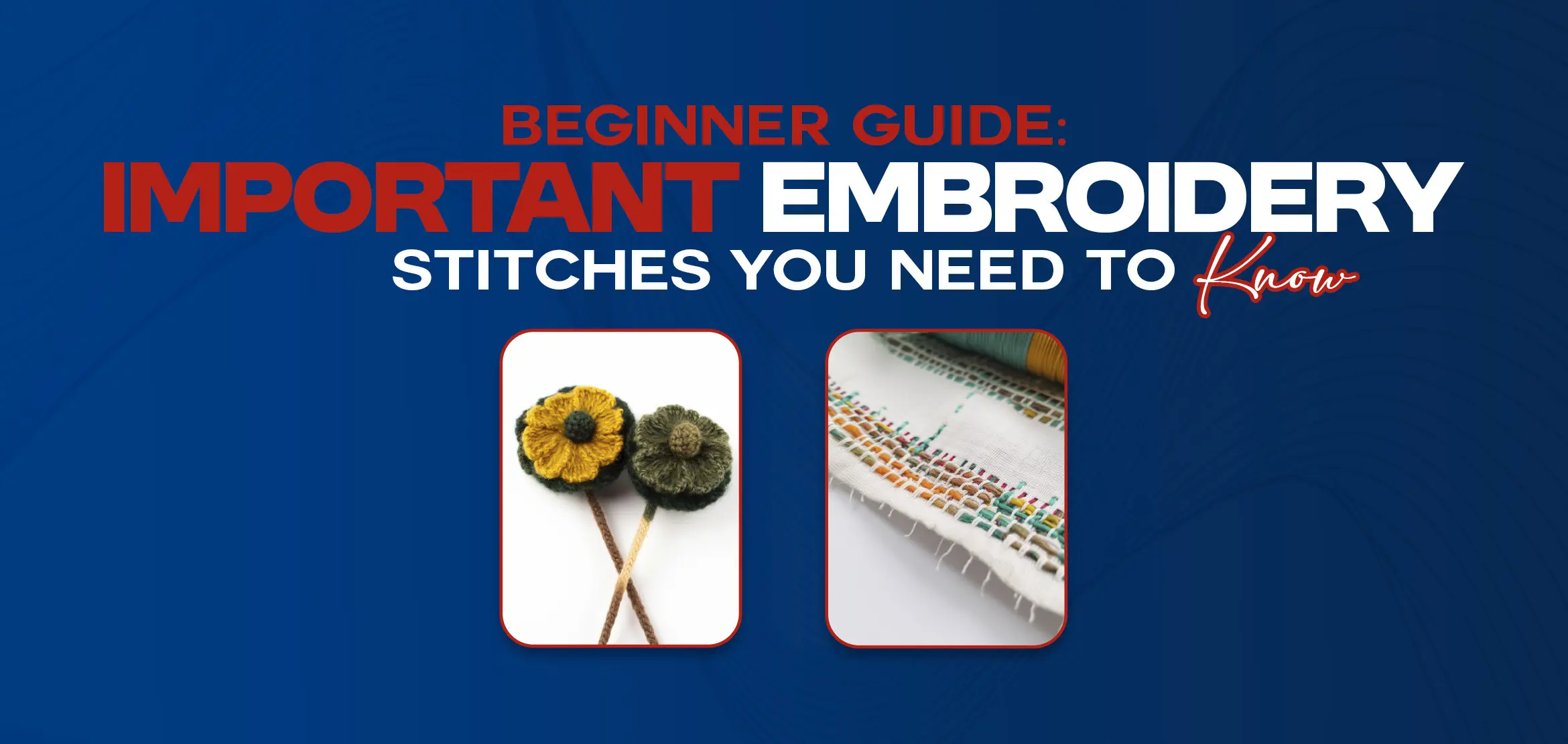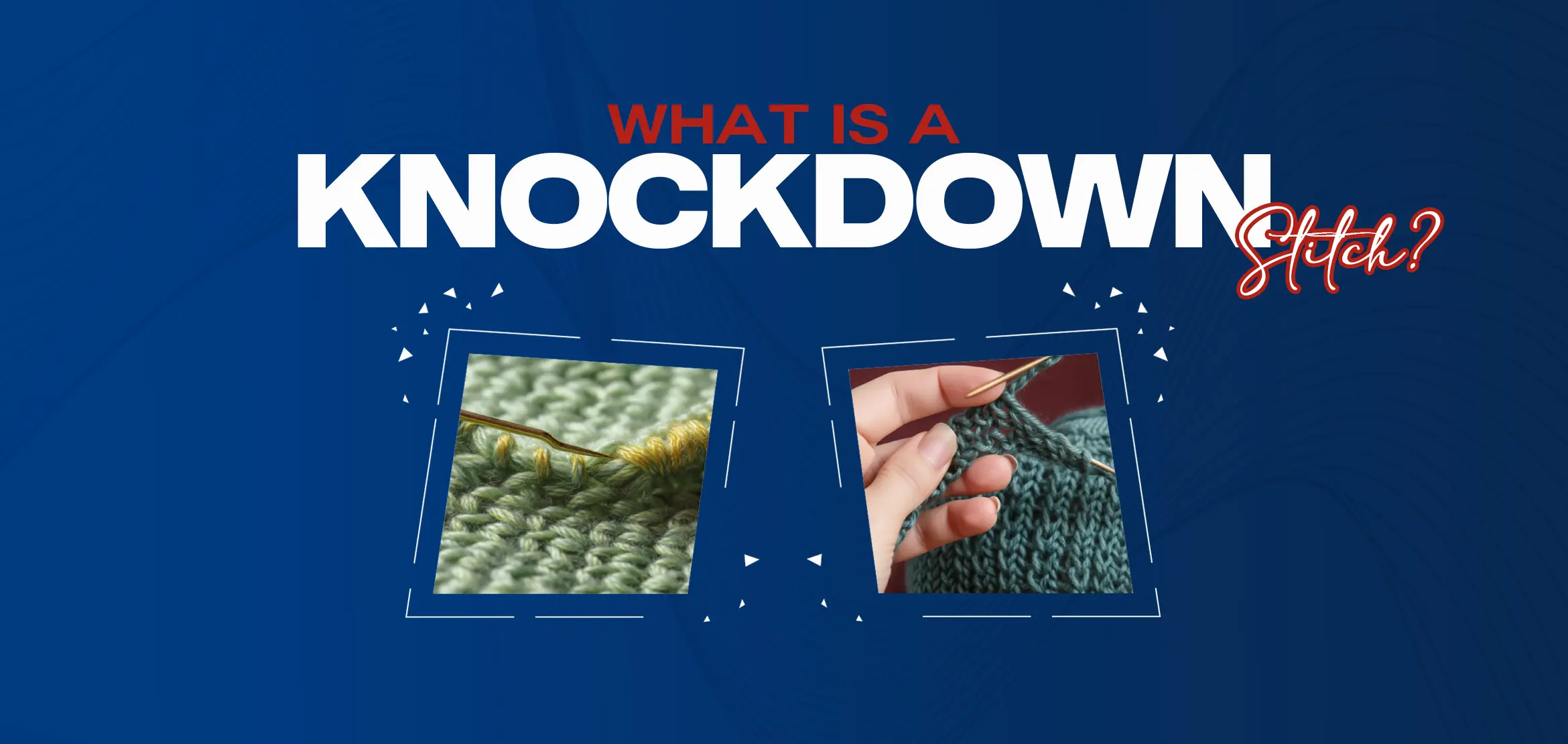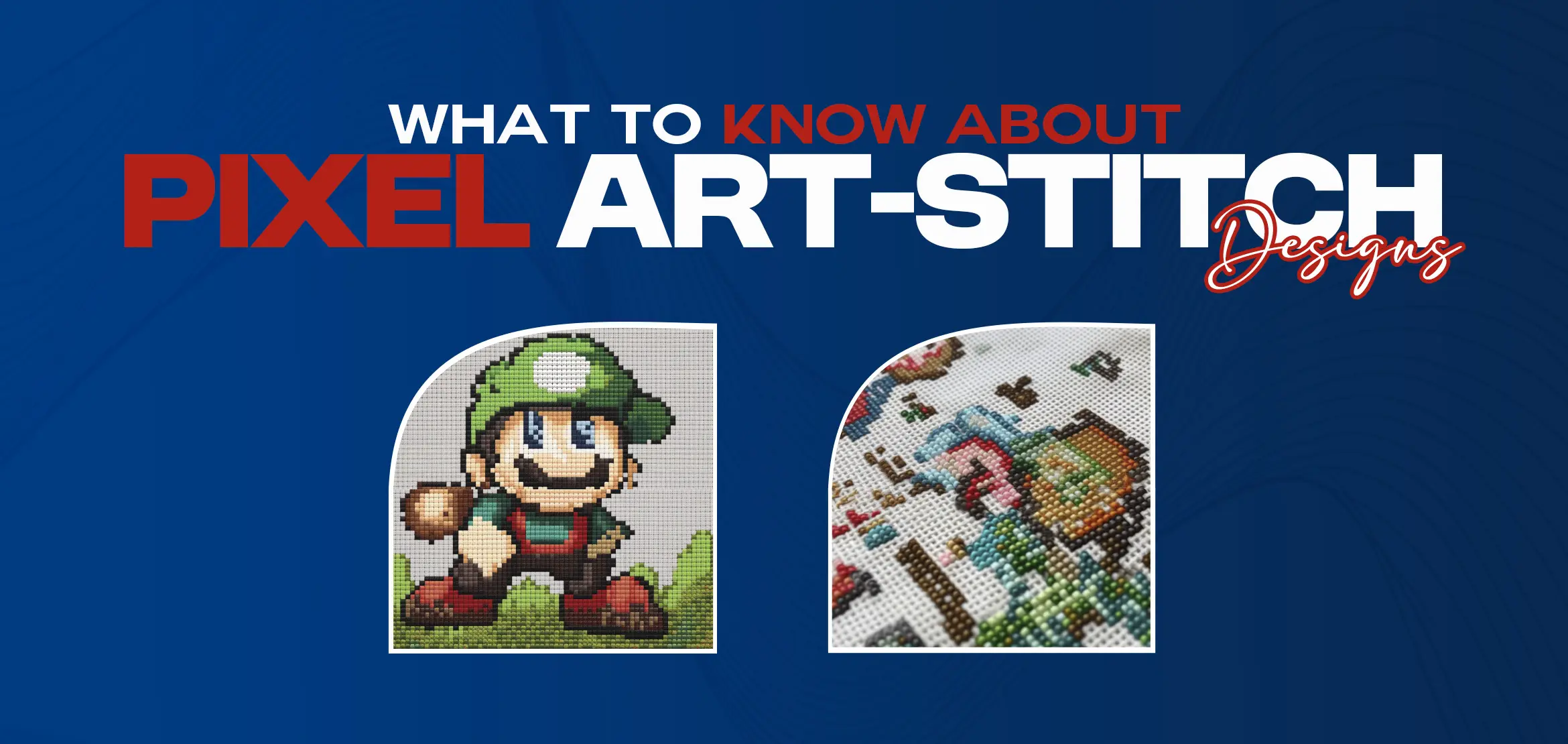
Beginner Guide: Important Embroidery Stitches You Need to Know
Embroidery is a craft and you can create any design that you want just by using a needle and thread. You can move the needle anywhere and every design is unique in itself. However, there are certain stitch types that you need to learn to make exclusive designs. Some simple stitches can help you develop your embroidery business and you can get many faithful clients. There is no restriction on fabric when it comes to making embroidery designs. You can use any type of fabric but commonly used fabric includes cotton, linen, patchwork cotton, satin, velvet, jersey, and plain cotton. As a newbie, you should go for cotton fabric as it is not elastic and your stitches stay in place. A designer can create patterns for anything like clothing, bed sheets, pillow covers, decorations, towels, stuffed cushions, etc. Embroidery increases the value of products by giving them a unique look. Learning some basic stitch types can help you work like a skilled designer. You can use these stitches to create any design that you want. These include Running Stitch is just how you sew. Fix the fabric in the hoop and secure it. Thread your needle and push the needle through your fabric while keeping the needle perpendicular to your fabric. Keep moving the needle in your desired direction and make stitches of your required size. You can pull the needle after a single stitch and then pull after many stitches when you become an expert. The only disadvantage of running a stitch is that it does not have the flexibility and can snap if done on stretchable fabric. Backstitch is generally required when you intend to create an outline of a hand-embroidered design. Now the trick here is to keep your needle close to the first stitch so there is a minute space between the two stitches. First, move a stitch forward and pull your needle, and thread up through the fabric. Now push the needle back through the fabric just by moving it at the base of the first stitch. This is how you can create evenly-spaced stitches. Backstitch can not look so smooth if there is an overlapping line of stitches. It may cause the fabric to gather up or create a lump of fabric and thread. The finished product will not have a perfect look. Straight stitch is probably the simplest stitch that any embroidery designer can make. All you need to do is to move your needle up through the fabric then pull the thread and move it down in the fabric after a space. It can help you create solid patterns and is excessively used for block printing stitches. You can use this method to make a textured pattern or fill in the design. As a beginner, you need to practice the size and spacing of these stitches. A straight stitch is not suitable for a stretchable fabric as it can easily break. The designer can however make a longer stitch but it does not have a flawless finish. You can create smooth lines and boundaries of design using a stem stitch. It is also used extensively in making floral patterns. You can make stylish stems using the stem stitch. Start by moving your needle forward to create a straight stitch. Then pass the needle through the side of the first stitch to make a stem stitch. The best thing about it is that it can work both for curves and straight lines of a pattern. Keep a consistent stitch length to make a textured embroidery design. The only problem with the stem stitch is that it needs precision and is very time-consuming. Satin stitches are used to fill in the patterns of the textured designs. The stitches are placed close together so they cover the fabric patch entirely and have no spaces. Creating satin stitches is very easy. Move the threaded needle through the fabric by pushing the needle down and then pull the needle up at a small distance from the initial point. The key is to keep the fabric firm while creating the stitches. Satin stitches are difficult to make because of the slippery texture. People need to wash them carefully and the thread is very high maintenance. A split stitch is a decorative stitch and makes a raised texture. It is similar to backstitch and you can create any pattern like a tapestry, trees, flowers, and outline of any design. The important step is to create short stitches for a flawless design. Make a small stitch just a small grain. Move your needle through the fabric and create a small stitch then pass your needle through the center of the stitch. Push the needle back into the fabric at a short distance away from the direction of the initial stitch. The only drawback of split stitch is that it puts mechanical stress on the thread and it might deform. But careful working can reduce this error. Chain stitch helps to create a bold line of embroidery. You can create a row of adjacent stitches that looks appealing and stands out. You can generate a chain by adding both forward and reverse stitches. Move the needle up through the fabric and then down making a loop. Pass the thread at the end of this loop to make a second connected loop. It forms a patterned chain. A disadvantage of a chain stitch is that it sometimes becomes bulky and is irreversible. You need to remove the thread completely and start over if you make a wrong stitch. It is the most interesting embroidery stitch and is sometimes a bit complicated. First, you need to make a circle of your desired choice and then create five stitches at even spaces from each other in the circle. Move the needle through the center point of the circle every time so that all the stitches meet. Now move the woven thread to the outer ends of the circle using straight stitches. It is a decorative stitch and looks the same as a spider web. You can make floral patterns especially roses with this technique. The only drawback is that it is a complicated stitch. The key to success with embroidery is to learn step-by-step. Do not be afraid to practice and give each stitch some time to reach perfection. Embroidery seems like pinning a complicated masterpiece but working gradually at each point can help you master the skill. The sooner you start the sooner you can grow and initiate your business. Plus, the embroidery business does not need a large-scale investment and you can start with handmade embroidery using the right needles, thread, fabric, and stitch typesWhich Fabric can you Use for Embroidery?
What is the Basic Type of Embroidery Stitches?
Running Stitch
BackStitch
Straight Stitch
Stem Stitch
Satin Stitches
Split Stitch
Chain Stitch
Woven Wheel Stitch
Conclusion




